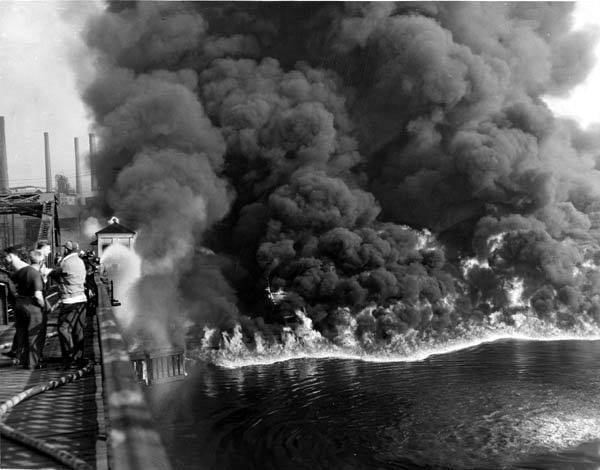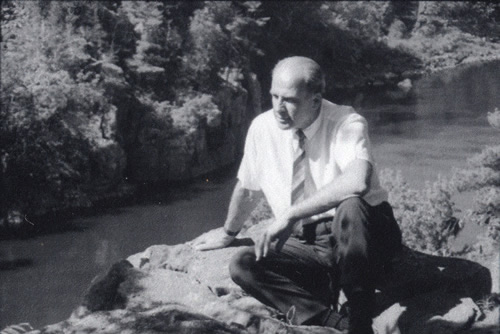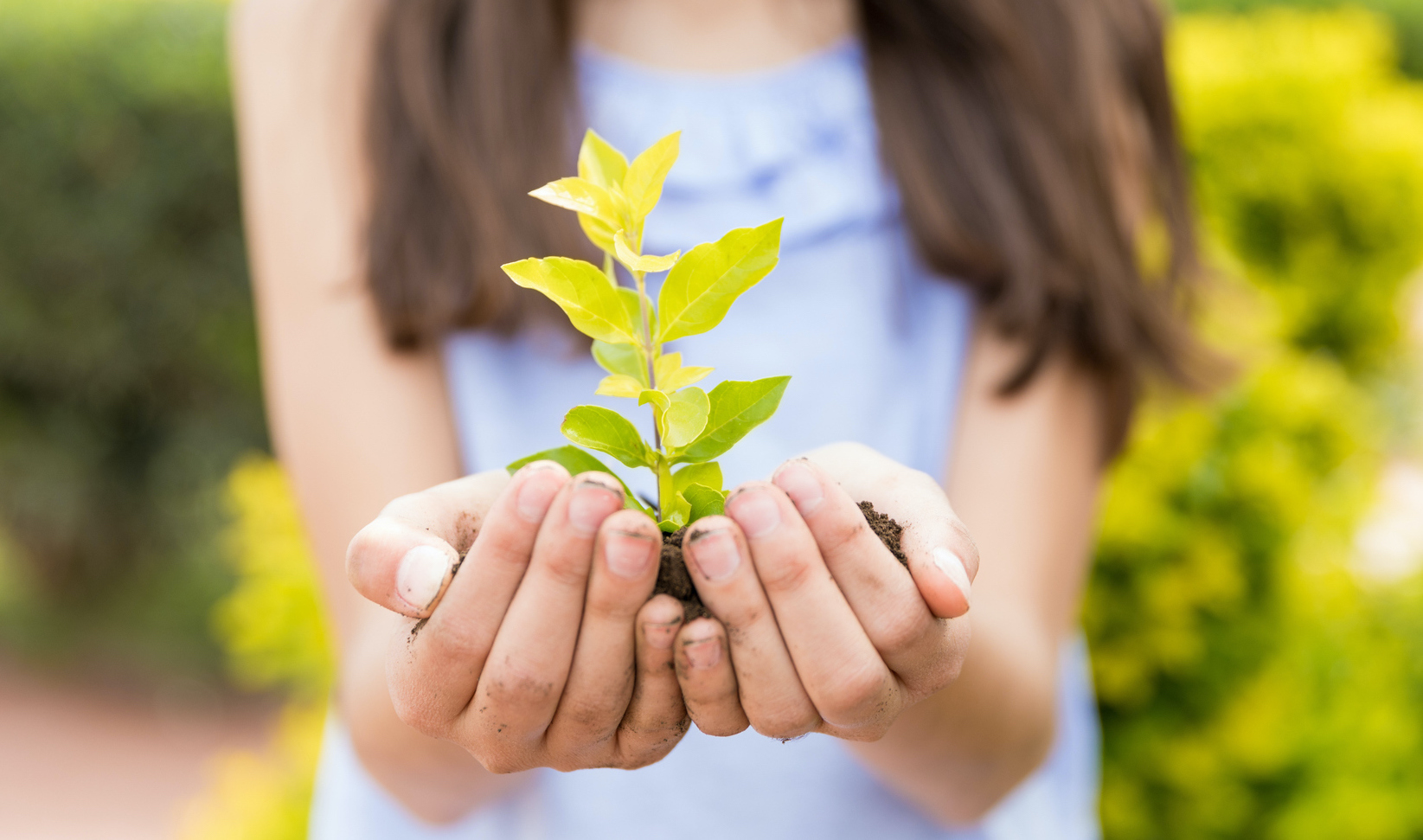Contributed by Hannah Bardei
To celebrate the 50th anniversary of Earth Day, we’re looking back to the first Earth Day and the impact it had on the world. We hope this article will help parents talk with their kids about an historic event that led to the most important environmental protections of our times, and why it’s so important to take care of our precious planet.

Leading up to the first Earth Day in 1970, the world was facing many environmental problems. So much oil and dangerous chemicals leaked into the Cuyahoga River in Ohio, it caught fire. Americans were using dangerous leaded gas in their cars and lead paint in their homes. Air pollution in major cities like Los Angeles was causing health issues, and the Santa Barbra oil spill in 1969 spewed an 800 square mile oil slick into the Pacific ocean, killing more than 10,000 seabirds, dolphins, seals, and sea lions along the shoreline, shocking California residents.
Famous ecologists everywhere had been warning people about the impacts of pollution and other environmental issues for years. Rachel Carson, in her book Silent Spring, wrote about the importance of conserving and taking care of the environment and the natural resources the world provides for us. And for the first time, Americans everywhere were seeing the direct effects of toxic environmental practices.

Gaylord Nelson, a U.S. Senator from Wisconsin, decided to create a teach-in about the environmental issues that America was facing and picked April 22nd as the date for it. On April 22nd, almost 20 million people took to the streets to strike, take action, and learn about environmental issues and what a sustainable future could look like. People from all walks of life, all political parties and all social classes attended the very first Earth Day as this was something that everyone could agree was important.
This united passion for protecting and preserving the earth led to many significant changes in the government and legislation. The National Oceanic and Atmospheric Administration (NOAA) and the Environmental Protection Agency (EPA) were officially created only months later. The Clean Air, Clean Water and Endangered Species Acts also passed soon after the very first Earth Day. These acts are still in effect today and have a huge impact on our daily lives.
The Clean Air Act limits the amount of air pollution and saved 160,000 lives last year. It is expected to save up to 230,000 lives in 2020 as well as limiting asthma and other respiratory conditions. Many organizations are now pushing for even more limits in this act for smog pollution which could stop up to one million asthma attacks and 4,300 premature deaths each year. The Clean Water Act prohibits dangerous chemicals being dumped into bodies of water, preventing events like the Cuyahoga River fire in 1969 from ever happening again.
Since the original Earth Day, many similar events have taken place every year. Earth Day went global in 1990, with over 141 countries participating in celebrations, strikes and actions. Only five years later the number of countries involved had gone up to 181. On Earth Day 2016, world leaders were asked to sign the Paris Climate Agreement and President Obama signed the order that very day. The number of people participating in Earth Day activities has only been increasing every year since.
This year for Earth Day, all activities are digital but still in full gear. Seventeen year old climate activist Greta Thunberg and the movement she created, Fridays For Future, along with many other organizations like Youth Climate Strike, are planning Earth Day actions that people can take part in from the safety of their own home. This year there will be digital teach-ins similar to the first Earth Day, speakers, and musical performances that everyone can attend from home.
In addition to Earth Day’s digital events, here are some fun and informative activities you can share with your children on Earth Day:
- Learn about the Youth Climate Strike and research activist Greta Thunberg’s impact on discussions about climate change. Ask your kids how they’d like to get involved. Many young people were involved in the original Earth Day, too!
- Look at newspaper and magazine stories about the Cuyahoga River catching fire and talk about how you’d feel if it happened to a river near your home.
- Visit a nearby river, stream or wetland and take photos of the plants and animals you see. Look for signs of spring in the wetlands. Bring along a trash bag to pick up any litter you see.
- Find out where your own drinking water comes from, whether it’s a nearby reservoir or a private well. Read about recent changes that weaken the Clean Water Act and discuss how it will impact clean water in your community.
- Climate change is making parts of the US warmer, which is increasing ozone levels at ground level. Join a Citizen Science project to monitor air in your community. If you can’t afford to purchase the air monitoring kit, talk with your local conservation organization to find out how they can help.
- Make an impact in your own home, every day, in how you live. Use the Sense Home app to figure out how much energy your home uses, especially your heating and cooling systems, consumer electronics, laundry, and dishwashing. Look for energy hogs you can turn off. Check out Sense Saves and the Sense blog for lots of ideas. Set a goal to reduce next month’s usage by 15% in the Sense Home app.
- On Earth Day, minimize your time in the car and take walks instead. Use a carbon footprint calculator to figure out how much carbon your car uses. Discuss as a family whether reducing that footprint is important when you buy your next car.
- Buy Rachel Carson’s book Silent Spring and talk about how science made a difference in public policy and how the book’s insights are still relevant today.
- Talk about why it’s important for reporters to share scientific information so we can make decisions that help people and the planet stay healthy.
Hannah Bardei contributed this blog. This spring, Hannah has been working as a Sense intern through a program at Minuteman High School in Lexington, Massachusetts. She lives with her family outside of Boston and is helping to organize Earth Day activities with an organization in Boston. Thank you, Hannah, for inspiring other young people to get involved this Earth Day!
